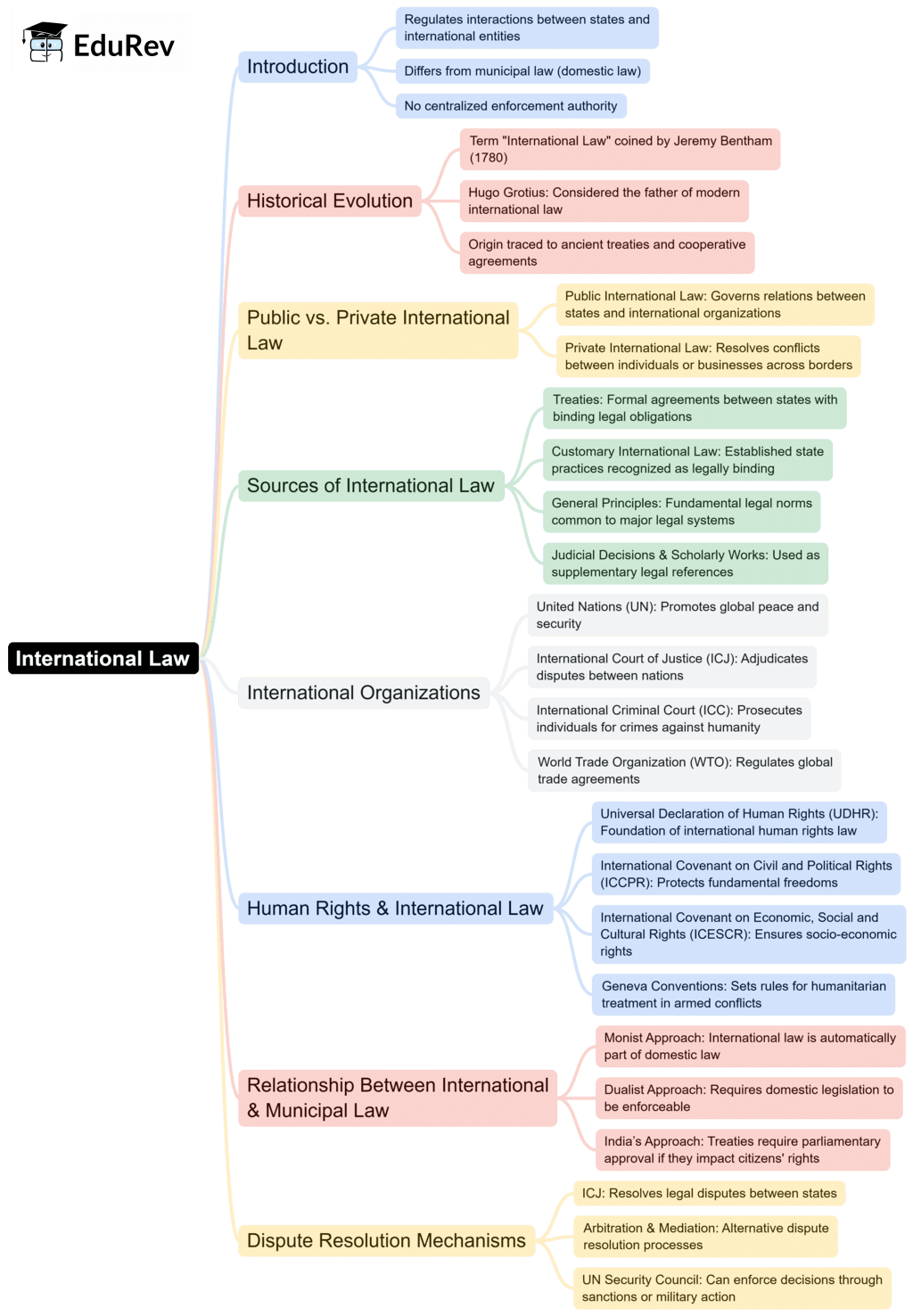Humanities/Arts Exam > Humanities/Arts Notes > Legal Studies for Class 12 > Mind Map: International Law
Mind Map: International Law | Legal Studies for Class 12 - Humanities/Arts PDF Download

The document Mind Map: International Law | Legal Studies for Class 12 - Humanities/Arts is a part of the Humanities/Arts Course Legal Studies for Class 12.
All you need of Humanities/Arts at this link: Humanities/Arts
|
98 videos|69 docs|30 tests
|
FAQs on Mind Map: International Law - Legal Studies for Class 12 - Humanities/Arts
| 1. What is international law and why is it important? |  |
Ans. International law is a set of rules and principles that govern relations between countries and international entities. It is important because it helps maintain peace and security, facilitates international cooperation, and provides a framework for resolving disputes between nations.
| 2. What are the main sources of international law? |  |
Ans. The main sources of international law include treaties, customary international law, principles of law recognized by civilized nations, judicial decisions, and scholarly writings. Treaties are formal agreements between states, while customary law arises from the consistent practice of states.
| 3. How does international law differ from domestic law? |  |
Ans. International law governs the relationships between sovereign states and international entities, whereas domestic law pertains to the laws and regulations within a specific country. International law often requires states to comply with obligations that may not be enforced by national courts.
| 4. What role do international organizations play in international law? |  |
Ans. International organizations, such as the United Nations, play a crucial role in the development and enforcement of international law. They facilitate cooperation among states, provide forums for negotiation, and can create binding treaties that member states agree to follow.
| 5. How are disputes resolved under international law? |  |
Ans. Disputes under international law can be resolved through various means, including negotiation, mediation, arbitration, and adjudication by international courts, such as the International Court of Justice. These methods aim to find peaceful solutions to conflicts between states.
Related Searches




















